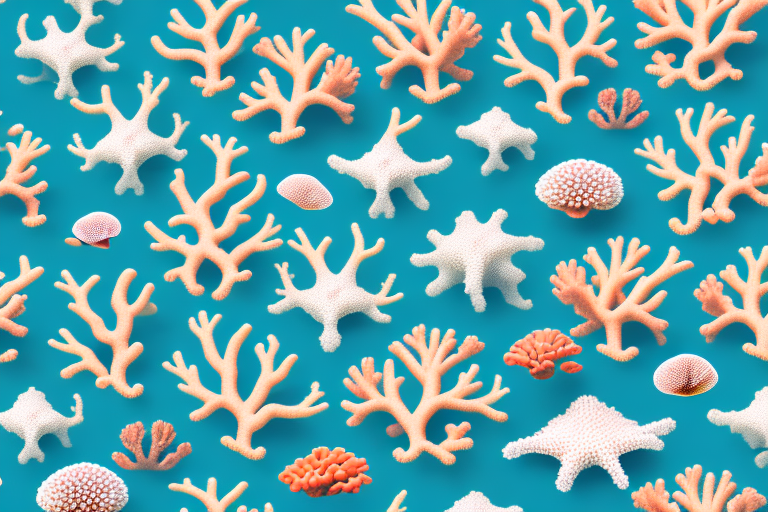Introduction
If you're in the market for shipping corals, it's crucial to secure the most cost-effective rates without compromising the safety and health of your aquatic livestock. In this article, we explore various strategies to find the best possible shipping rates for corals, specifically comparing services offered by two major shipping carriers: FedEx and UPS.
The Importance of Comparing Shipping Rates for Corals
When shipping livestock like corals, thorough research is essential to identify which carriers offer the most competitive rates. Corals are delicate organisms that require specialized handling to ensure their safe and healthy arrival. By comparing shipping rates, you can significantly reduce costs without sacrificing the quality of care your corals receive during transit.
Moreover, shipping times are a critical factor when transporting corals. These marine creatures can only survive for a limited duration outside their natural habitat, necessitating the selection of a carrier that can deliver them swiftly and efficiently. Some carriers may offer lower rates but longer shipping times, which can jeopardize the health of your corals. Balancing cost and shipping speed is essential to ensure the safe and timely arrival of your precious aquatic livestock.
Understanding Shipping Costs and Key Factors
How Shipping Costs Are Calculated
Shipping carriers typically determine costs based on the weight of the package and the distance it travels. For shipping corals, additional fees may apply for the value of the items and any special handling requirements. Expect extra charges for insulated packaging, heat packs, and other materials specific to safeguarding aquatic life.
Shipping Methods and Timing
Shipping costs can vary significantly depending on the chosen shipping method. Expedited shipping options, which ensure faster delivery, often come at a higher price compared to standard shipping. Additionally, carriers may offer discounts for off-peak shipping times, allowing you to save money by scheduling shipments during less busy periods. When calculating shipping costs, always consider potential discounts or promotions that may be available.
Additional Fees and Considerations
Factors such as package dimensions, fragility, and insurance requirements can further influence shipping costs. It's important to account for these variables when planning your shipment to avoid unexpected expenses.
FedEx vs UPS: Comparative Analysis
FedEx and UPS are two of the leading players in the shipping industry, each offering a comprehensive range of services tailored to different shipping needs.
Service Offerings
FedEx is renowned for its same-day delivery services available in many major cities across the United States, making it an excellent choice for urgent shipments. UPS, conversely, provides a broader spectrum of delivery options, including ground, air, and ocean freight, which are ideal for larger or heavier packages.
Insurance and Coverage
Both carriers offer insurance options, but FedEx typically provides more personalized service with higher coverage limits, which is advantageous for high-value or rare corals. UPS is noted for its reliability in tracking and delivery updates, ensuring that you’re always informed about your shipment's status.
Global Reach
FedEx has a stronger presence in international markets, with more direct flights and a larger network of international partners. Meanwhile, UPS boasts a robust domestic network with extensive ground transportation options, making it a preferred choice for domestic shipments.
Factors to Consider When Choosing a Shipping Carrier
Delivery Speed
Assess your urgency in receiving the corals. If rapid delivery is essential, FedEx’s expedited services might be more suitable. For less time-sensitive shipments, UPS’s ground shipping options can provide cost savings.
Insurance and Value Coverage
If you're shipping high-value or rare corals, consider the insurance options each carrier offers. FedEx generally provides more robust insurance coverage, which can offer peace of mind during transit.
Destination and Global Reach
Evaluate whether your shipment is domestic or international. UPS’s extensive ground transportation network makes it a strong option for domestic shipments, while FedEx’s global reach is advantageous for international shipping.
Customer Service and Support
Consider the quality of customer service and support. FedEx is known for more personalized service with dedicated account managers for larger clients, whereas UPS is recognized for its reliable tracking and delivery updates.
Tips for Securing the Best Shipping Rates
- Consolidate Shipments: Combine multiple corals into a single package to minimize weight and reduce overall shipping costs.
- Alternative Packaging Materials: Use lightweight materials like styrofoam or foam sheets instead of traditional boxes to decrease package weight.
- Compare Multiple Carriers: Research and compare rates from different shipping carriers to find the most competitive options for your specific shipment.
- Take Advantage of Discounts: Look for discounts or promotions offered by carriers or coral suppliers that can help lower your shipping expenses.
- Proper Labeling: Ensure all shipping labels are accurate to avoid delays or additional fees caused by errors.
Saving Money on Coral Shipping Costs
Leverage Loyalty Programs
Many shipping carriers offer loyalty programs that provide discounts, free shipping credits, or other perks. Signing up for these programs can lead to long-term savings, especially if you ship corals frequently.
Bulk Shipping Discounts
Carriers like FedEx and UPS often provide bulk shipping discounts for businesses that ship regularly or meet certain shipping volumes. This can be a cost-effective solution for large-scale coral shipments.
Optimal Shipping Times
Scheduling shipments during off-peak seasons or mid-week days, such as Tuesdays or Wednesdays, can result in lower shipping rates compared to peak times like Mondays or Fridays.
Choose Ground Shipping When Possible
Ground shipping is generally more affordable than air shipping. While it may take longer, ground shipping can be a viable option if the additional time does not adversely affect the health of your corals.
Common Mistakes to Avoid When Shipping Corals
- Poor Packaging: Insufficient or inappropriate packaging can lead to damage. Use materials that provide adequate protection during transit.
- Shipping in Extreme Weather: Avoid sending shipments during extreme heat or cold, which can harm your corals.
- Incorrect Labeling: Mistakes in shipping information can cause delays and additional fees. Double-check all labels for accuracy.
- Improper Acclimation: Failing to acclimate corals to their new environment can result in stress or death. Gradually adjust water parameters in their new tank.
- Ignoring Regulations: Some corals may be protected or prohibited in certain regions. Ensure compliance with all relevant shipping laws and regulations.
Best Practices for Shipping and Receiving Corals
Packaging and Preparing Corals for Shipping
Proper packaging is vital to ensure the safe transport of corals. Follow these best practices:
- Acclimate to Packaging: Gradually adjust corals to shipping conditions by slowly changing temperature and salinity levels during preparation.
- Use Specialized Packaging: Avoid plastic bags; instead, use carrier bags designed for aquatic life to ensure proper ventilation and protection.
- Insulated Materials: Incorporate materials like foam sheets and heat packs to maintain stable temperatures and protect against shocks during transit.
Tracking and Insuring Your Shipment
Once your coral shipment is on its way, utilize tracking services offered by carriers like UPS and FedEx to monitor your package’s progress. This allows you to stay informed about the location and estimated delivery time of your shipment. Additionally, consider insuring your shipment to protect against potential loss or damage. Both carriers offer insurance options that can provide coverage tailored to the value of your corals.
Receiving and Acclimating Shipped Corals
Upon receiving your corals, follow these steps to ensure a smooth acclimation:
- Inspect the Package: Check for any signs of damage or extreme temperature changes before opening.
- Gradual Acclimation: Slowly introduce corals to your tank's water parameters to prevent sudden stress. This may involve placing the closed bag in the tank to equalize temperatures before fully integrating the corals.
- Monitor Health: Observe your corals for any signs of stress or adverse reactions after acclimation, and adjust tank conditions as necessary.
Conclusion: Making Informed Decisions about Your Coral Shipping Needs
By understanding the various factors that influence shipping rates and carefully comparing services from major carriers like FedEx and UPS, you can make informed decisions that balance cost-effectiveness with the well-being of your corals. Implementing key strategies and best practices will help you secure affordable shipping rates while ensuring the safe and healthy arrival of your aquatic livestock. With these insights, you can confidently manage your coral shipments and contribute to a thriving aquatic ecosystem.




















